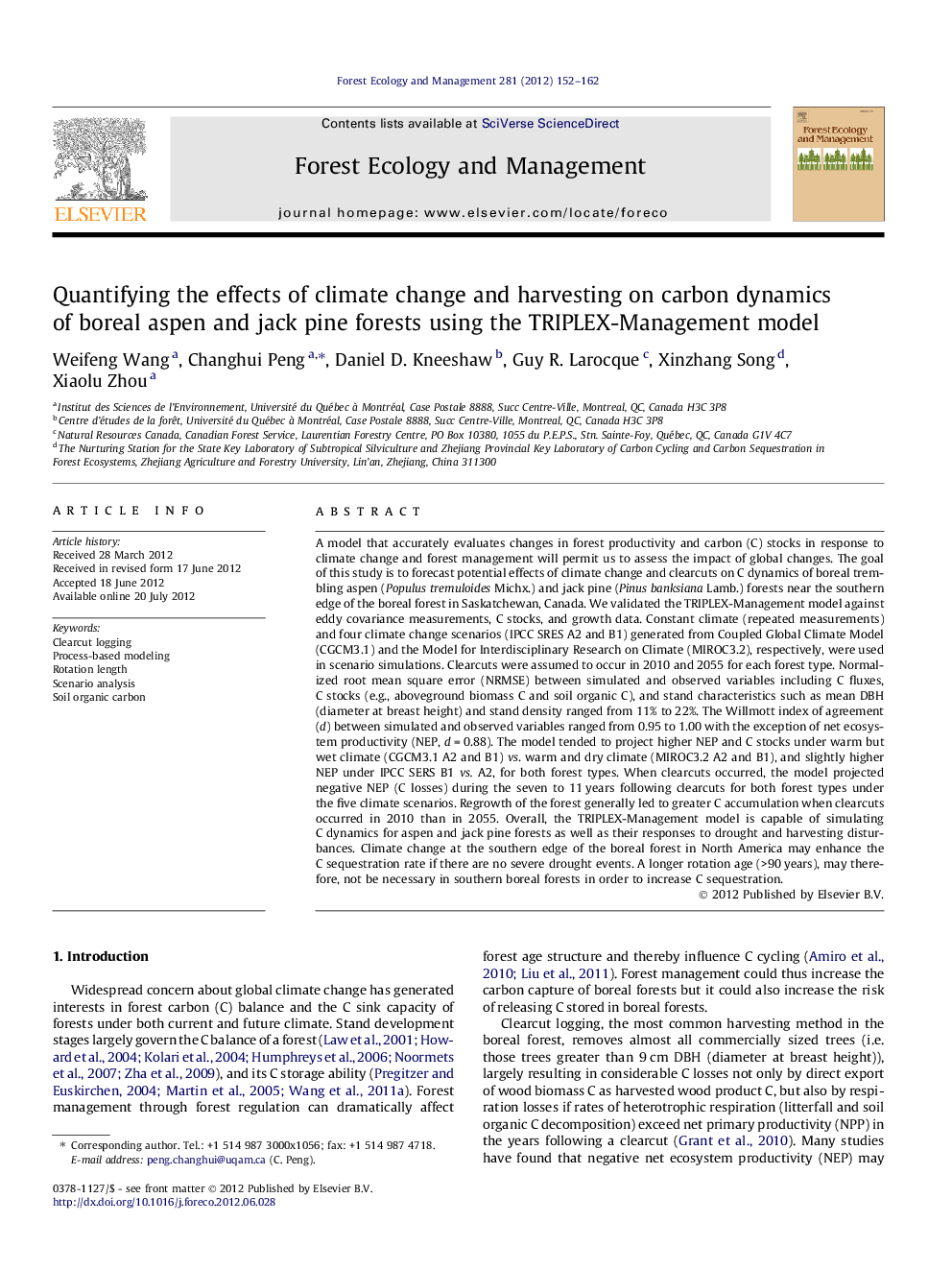| کد مقاله | کد نشریه | سال انتشار | مقاله انگلیسی | نسخه تمام متن |
|---|---|---|---|---|
| 87137 | 159233 | 2012 | 11 صفحه PDF | دانلود رایگان |

A model that accurately evaluates changes in forest productivity and carbon (C) stocks in response to climate change and forest management will permit us to assess the impact of global changes. The goal of this study is to forecast potential effects of climate change and clearcuts on C dynamics of boreal trembling aspen (Populus tremuloides Michx.) and jack pine (Pinus banksiana Lamb.) forests near the southern edge of the boreal forest in Saskatchewan, Canada. We validated the TRIPLEX-Management model against eddy covariance measurements, C stocks, and growth data. Constant climate (repeated measurements) and four climate change scenarios (IPCC SRES A2 and B1) generated from Coupled Global Climate Model (CGCM3.1) and the Model for Interdisciplinary Research on Climate (MIROC3.2), respectively, were used in scenario simulations. Clearcuts were assumed to occur in 2010 and 2055 for each forest type. Normalized root mean square error (NRMSE) between simulated and observed variables including C fluxes, C stocks (e.g., aboveground biomass C and soil organic C), and stand characteristics such as mean DBH (diameter at breast height) and stand density ranged from 11% to 22%. The Willmott index of agreement (d) between simulated and observed variables ranged from 0.95 to 1.00 with the exception of net ecosystem productivity (NEP, d = 0.88). The model tended to project higher NEP and C stocks under warm but wet climate (CGCM3.1 A2 and B1) vs. warm and dry climate (MIROC3.2 A2 and B1), and slightly higher NEP under IPCC SERS B1 vs. A2, for both forest types. When clearcuts occurred, the model projected negative NEP (C losses) during the seven to 11 years following clearcuts for both forest types under the five climate scenarios. Regrowth of the forest generally led to greater C accumulation when clearcuts occurred in 2010 than in 2055. Overall, the TRIPLEX-Management model is capable of simulating C dynamics for aspen and jack pine forests as well as their responses to drought and harvesting disturbances. Climate change at the southern edge of the boreal forest in North America may enhance the C sequestration rate if there are no severe drought events. A longer rotation age (>90 years), may therefore, not be necessary in southern boreal forests in order to increase C sequestration.
► We compare a carbon dynamics model to measurements of carbon fluxes and stocks.
► We quantify boreal forest carbon exchange to climate change and forest management.
► Climate change with appropriate rotation length may enhance carbon sequestration.
► Forests may lose carbon for 7–11 years following clearcuts, but capture more after.
► Lengthening rotation age (>90 years) may not be needed in southern boreal forests.
Journal: Forest Ecology and Management - Volume 281, 1 October 2012, Pages 152–162